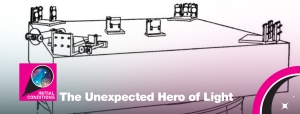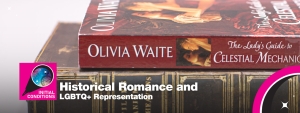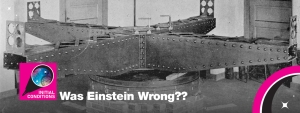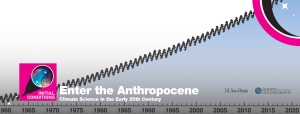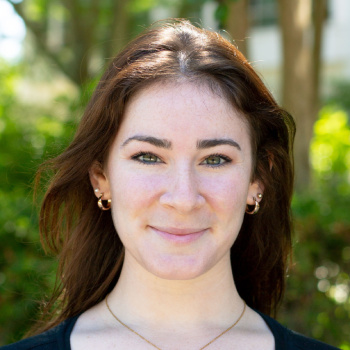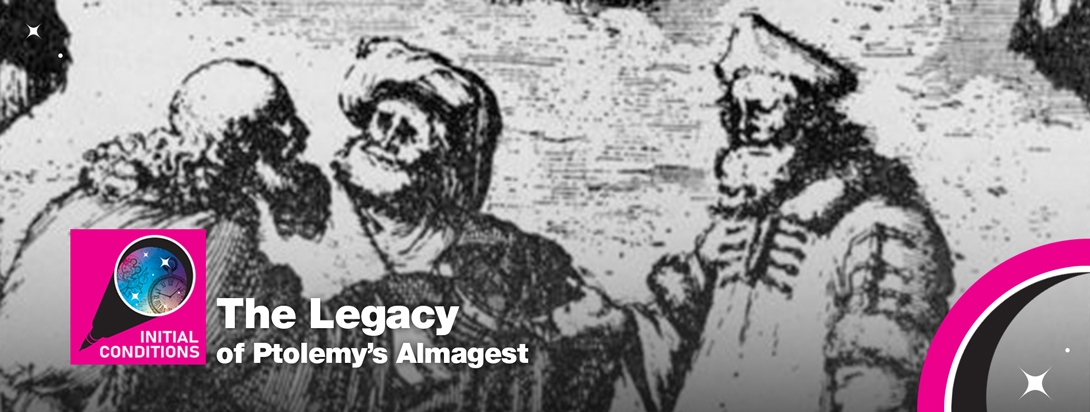
Depicted left to right are: Aristotle, Ptolemy, and Copernicus. Original frontispiece from Galileo's Dialogues on the Great World Systems
Media Credit: AIP Emilio Segrè Visual Archives, Catalog ID: Galileo Galilei H4
This episode dives into the story of the oldest book in NBLA’s Wenner Collection: a 1528 Latin translation of the Almagest. Claudius Ptolemy wrote the Almagest, originally titled Mathēmatikē Syntaxis, in the 2nd century CE. In the Almagest, Ptolemy proposed a mathematical model to explain and predict the motions of celestial objects. Though his geocentric model was debunked by the 16th century, the text facilitated the great observations and models produced by medieval Arabic astronomers. This episode follows the Almagest throughout its 1500 years of influence, focusing on its importance during the rise and spread of Islam in the 7th century and the text’s eventual fall from popularity in sixteenth century Europe. This episode features interviews with prominent scholars, George Saliba (Director of the Farouk Jabre Center for Arabic & Islamic Science and Philosophy at the American University of Beirut) and John Hessler (Curator at the Library of Congress and author of A Renaissance Globemaker's Toolbox: Johannes Schöner and the Revolution of Modern Science 1475-1550).
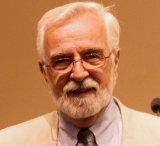
Professor George Saliba is the Director of the Farouk Jabre Center for Arabic & Islamic Science and Philosophy at the American University of Beirut. He is a historian of Arabic and Islamic Science and has authored several books and articles on the subject. https://www.aub.edu.lb/fas/histarc/Pages/details.aspx?MemberId=gsaliba
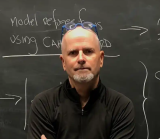
Dr. John Hessler is a Specialist in Computational Geography & Geographic Information Science (GIS) and curator of the Jay I. Kislak Collection of the Archaeology and History of the Early Americas at the Library of Congress. His articles and books span from biogeography to biographies.
JUSTIN: Allison, I have a question for you.
ALLISON: Yes?
JUSTIN: What’s the oldest book from the Wenner Collection at the Niels Bohr Library and Archives?
ALLISON: You mean the NBLA?
JUSTIN: Yes. That’s the one. Not to be mistaken with the NBA.
ALLISON: I’ve made that mistake before. Well, the oldest book in the Wenner Collection is a book called the Almagest. It was printed in 1528 and written by Claudius Ptolemy.
MAURA: But Ptolemy lived much longer ago than that.
ALLISON: Yeah. The Almagest was written originally in Greek around 150 C.E., so a thousand more years before.
MAURA: And the fact that it was translated and printed 1,400 years after it was written speaks to the longevity and importance of this ancient text.
JUSTIN: Our copy is also written in Latin, not Greek, and scholars continue to translate and critique the Almagest to this day.
ALLISON: I’m Allison Rein, your tour guide through the NBLA.
JUSTIN: I’m Justin Shapiro.
MAURA: And I’m Maura Shapiro.
ALLISON: Well, I know you all say you’re not related, but I did a little genealogy, and I found your common ancestor: Morty Shapiro of the famous Boston Shapiros. So you’re the heirs to the great Boston Baked Beans fortune.
MAURA: Woo!
ALLISON: But on the flipside, you’re also being sued by victims of the Boston Molasses Flood, so maybe you don’t want to claim that heritage.
MAURA: Hmm. Ignorance is bliss. [laughs]
JUSTIN: Welcome to “Initial Conditions.”
MAURA: A physics history podcast.
JUSTIN: Every physics problem begins with a set of initial conditions that provide the context for physics to happen.
MAURA: Likewise, in “Initial Conditions,” we’ll provide the context in which physics discoveries happen. We’ll dive into the history behind the science of people, places, and events that have been overlooked and largely forgotten.
JUSTIN: Today we’re going to talk about the Almagest by Ptolemy, one of the most important guides to astronomy ever written. In fact, scholars were referring to it over 1,500 years after it was written.
MAURA: So for this episode, my “initial conditions” are not so much “initial” as they are just “conditions,” meaning they represent the long lifespan of Ptolemy’s Almagest.
JUSTIN: Okay, let’s hear these conditions.
MAURA: Okay. First we have the famous ancient Greek philosopher, Aristotle.
JUSTIN: I might have heard of Aristotle.
MAURA: I’m sure you have. Aristotle lived around 300 B.C.E., but his philosophy had a huge influence on the Almagest and on its legacy.
JUSTIN: Okay. First initial condition: Aristotle. What’s the second initial condition?
MAURA: Second, we have the rise and spread of Islam in the 7th century.
JUSTIN: Okay. And the third?
MAURA: And our third condition is the fascination Renaissance scholars had with classical ancient Greek texts in the 16th century.
JUSTIN: Okay. So to get this straight, our conditions span 2,000 years. For a work to have that sort of lasting influence, Ptolemy must have been an impressive guy.
SALIBA: I think he is the most intelligent astronomer Greek civilization had ever produced.
MAURA: That wasn’t me.
JUSTIN: I noticed.
MAURA: That is our first guest on today’s episode. Meet Professor George Saliba, who is an expert on Ptolemy and Arabic Astronomy.
SALIBA: I work here at the American University of Beirut at the center called the Farouk Jabre Center for Arabic and Islamic Science and Philosophy, and we focus basically on the study of science and philosophy when it was all written in Arabic.
MAURA: Professor Saliba pointed out that before the 16th or 17th century, a lot of what we could consider “western science” was actually written in Arabic. That’s why there are many terms in science that are borrowed from the Arabic language.
JUSTIN: Exactly. Terms like algebra, or stars like Betelgeuse, those words have Arabic origins. But aside from being the most intelligent astronomer the Greek civilization ever produced, as far as we know, who was Ptolemy?
MAURA: Well, not much is really known about him aside from what we can gather based on his texts that survive. Claudius Ptolemy lived roughly 100 to 170 C.E., in or near Alexandria, Egypt, and he wrote in Greek, so he was either Greek or was a Hellenized Egyptian.
JUSTIN: Alexander the Great conquered Egypt in 330 B.C.E. After he died, his generals divided his territory. One of those generals, Ptolemy I Soter, became Pharaoh of Egypt in 305 B.C.E., creating the Ptolemaic Dynasty, which would become the last dynasty of ancient Egypt. Is Claudius Ptolemy related in any way to the pharaohs?
MAURA: It’s not likely. Ptolemy was a common Macedonian name, and there are other cities named after the Ptolemaic pharaohs. So it’s more likely that our astronomer was from a city named for one of these Ptolemaic pharaohs, or it just happened to be his family name.
JUSTIN: Right. Just because two people have the same name doesn’t mean they’re connected.
MAURA: Yeah. And we know this better than most. Because Ptolemy was famous mostly after his death, ancient biographers of Ptolemy had very little to work with,
[5:00]
so they sometimes just made things up. They assumed he was royal and described his appearance as: medium height, pale, black beard, small mouth, a pleasant voice, and all of these characteristics are just how Greek philosophers were often characterized. In artwork, Ptolemy was often portrayed as royalty with these Greek features.
JUSTIN: So that’s as much as we really know about Ptolemy. Can you tell me anything about what he did?
MAURA: For that, I’m going to introduce our second guest, Dr. John Hessler from the Library of Congress, who is an expert on Ptolemy and the Renaissance.
HESSLER: My name is John Hessler, and I’m a curator at the Library of Congress. And many, many years ago, we were involved in a big purchase of a $10 million map which was called the Waldseemuller 1507 Map. And Waldseemuller wrote several small little astronomy books that were very much associated with Ptolemy, sort of late 16th and early — or late 17th and early 16th century astronomy books. And that kind of forced me into the world of Ptolemy for a number of years, and to a certain extent, I never left. Ptolemy is one of the most sort of important characters in early — certainly in early Renaissance science.
MAURA: The Almagest was written about 150 C.E. Dr. Hessler emphasizes the importance of looking at the Almagest as part of Ptolemy’s larger work.
HESSLER: Well, Ptolemy, you know, has a lot of different works, but they all kind of center around a particular theme of sort of cosmology. Obviously, there’s the Almagest, which is probably the most successful single scientific book ever written. It lasted hundreds and hundreds of years as the single best way to calculate planetary motion, position of stars, eclipses, things like that. Ptolemy also did a work called the Geographia which is really a compendium of maps, and really his third major work is called the Tetrabiblos, which is really a work on causality. It really is astrology, but in Ptolemy’s hands, it really is looking at the positions of the stars, the positions of the planets at your birth, or at the creation of a country or the reign of a ruler and attempting to predict based on that what’s going to happen in the future. He really specialized in a form of astrology called “natal astrology,” which really has to do with the position of the stars and your position on the Earth at birth. And it was an extremely popular form of astrology moving into the Middle Ages and into the Renaissance period. It’s sort of — what builds on our astrology today is that kind of natal astrology.
JUSTIN: So Ptolemy sets up a coherent framework for understanding causality in the world. The Almagest contains astronomical observations and mathematical models to explain celestial phenomena.
MAURA: The Almagest is sort of a compilation of works that predated Ptolemy. It includes observations and mathematical techniques of the Babylonians, observations by other Greek and Egyptian astronomers, and Aristotelian philosophy.
JUSTIN: There’s our first initial condition: Aristotle.
MAURA: Ptolemy’s brilliance was not in his astronomical observations but in his efforts to unite different theories into one framework, similar to what Euclid did for mathematics 400 years earlier. So he made this mathematical model.
SALIBA: He called it the great collection — mathematical collection.
MAURA: In Greek, “Megalē Syntaxis.” But of course, we don’t refer to it as such now.
JUSTIN: Right. I mean, you and I have been calling it the Almagest.
SALIBA: Later on, it was known, and continues to be known now, as the Almagest, on the basis of a transliteration from Greek into Arabic. The “al” at the beginning of “Almagest” is a definite article of Arabic. It has nothing to do with the Greek.
MAURA: “Megalē” in its superlative form became “megístē,” and now we have the name Almagest.
JUSTIN: Or, “the greatest.”
MAURA: An enviable nickname, certainly. Ptolemy had a large text. He had to explain the motion of the planets and the fixed stars. Ptolemy —
SALIBA: — inherited from Aristotle a cosmology that simply says: we are at the center of the universe, and look around us. As we see, the Sun comes up in days, it goes down in the evening, and it looks like it is moving in a circle around us. And the only body that can carry things in a circle is a sphere.
[10:00]
Therefore, we live in a universe packed with spheres, one inside the other, and we are at the very center, and that’s how we can explain the phenomenon that we see there.
MAURA: The motion of the planets and the universe around Earth is the geocentric model. Because he figured the planets moved in circular orbits along their nested spheres, the theoretical motion of the planets did not perfectly align with observation. Occasionally, if you’re tracking the orbit of a planet, it will appear that the planet is actually moving backwards. That was dubbed “retrograde motion.”
JUSTIN: I’ve heard of this when people talk about astrology, like, “Mars is in retrograde, so something bad will happen.”
MAURA: Yeah. The planet is not actually moving backwards. Both planets are orbiting the Sun in an elliptical orbit, and Earth’s orbit simply passes the other. But Ptolemy didn’t know that. All he knew was that his model did not line up with reality, so he made some tweaks. He added epicycles, which are little circular orbits that planets take during their larger orbit around Earth.
JUSTIN: Like a series of loop-de-loops on a roller coaster.
SALIBA: He decided to actually produce a mathematical model by which you can predict when those planets will be, two weeks from now, one month from now, one hundred years from now, and so on. To do that, he needed to build a kind of geometry that mimics the behaviors of the spheres and be able to plug into that geometry basic observational foundations that hence will allow you to construct that predicting machine. And as such, he could actually predict the movements of the stars and tell us exactly where they are.
MAURA: With this predicting machine, Ptolemy calculated the behavior of the planets Mercury, Venus, Mars, Jupiter, and Saturn.
JUSTIN: Once Ptolemy assembled this astronomical predicting machine that is the Almagest, who was reading it and using it?
MAURA: That’s a good question, and certainly the audience evolved over the Almagest’s long life span. Definitely, it’s a very complex work that requires education to be able to understand. Ptolemy even states that his reader needs to be familiar with Euclidean geometry before attempting to understand it. Still it had public implications, and there’s evidence that there would be widespread interest. Before writing the Almagest, Ptolemy constructed what is called the Canobic Inscription, basically a stele or giant slab, and he inscribed in it constants needed for someone to replicate his work. Here’s Dr. Hessler when we asked him about the audience.
HESSLER: So who the audience was, when you think about a public stele like this, obviously there’s some sort of notion that people are interested, that this is something that wants — that needs to be preserved. But for the most part, you know, Ptolemy was an academic astronomer, very much in the same way academic astronomers are today. When he wrote it, it must have had an extremely limited audience. We’re talking about the era of papyrus scrolls and things like that. There are very few people who, at the time of Ptolemy or even into the Renaissance, would not only understand the Greek, the technical terms that Ptolemy is using, but he’s using a form of numbering, the sexagesimal system, which derives from the Babylonians, which is a very complex way of actually handing fractions and things like that, that he needs to handle.
JUSTIN: It’s difficult enough to read technical texts in your native language, let alone in an unfamiliar language using a different base-60 numbering system.
MAURA: The Almagest also includes something called the “Handy Tables,” that are astronomical observations. Some he claimed he observed himself, some are by other astronomers like Hipparchus, and other observations predate even him.
JUSTIN: Like a census for celestial objects, it tells you where stars and planets are and where they might be at any time.
MAURA: Yeah, and you can plug them into Ptolemy’s model and figure out where they’ll be in the future.
JUSTIN: The Almagest really has everything.
HESSLER: One of the major problems with Ptolemy’s book is that it was so successful. It was such an improvement in what came before that a lot of what came before disappeared.
MAURA: It was almost too good, because once you have this book, you don’t really need everything else. But it was not perfect, and Ptolemy recognized that. He knew that with every observation, there would be some amount of error that would be compounded over time. Here’s Professor Saliba again.
SALIBA: Ptolemy knew that as well, that when you made measurements and that _____ and you build them for a predicted model, those measurements will fail you a hundred years from now, two hundred years, because the little mistakes that you accept now, with the passage of time,
[15:00]
they get magnified. And at the same time as he building a model, he was also _____ that this model needs constant updating.
JUSTIN: Just as a machine needs oiling and a little bit of maintenance here and there, the observations in the Almagest needed maintenance to stay functioning.
MAURA: The Almagest became a very popular work. In the late 4th century, Theon of Alexandria, a very notable Greek scholar, wrote commentary on the Almagest. But it was actually credited mostly to his daughter Hypatia, who was of course the first paid woman mathematician and astronomer.
JUSTIN: Unfortunately, she died a horrible death.
MAURA: Yeah. She was ultimately skinned alive, because she refused to convert to Christianity. Anyway, the Almagest was taught in academies in the 6th century, but when many Greek scholars fled to Persia after the closing of the Academy in Athens, that further spread the influence of Ptolemy’s work. So it’s spreading, but it’s not overwhelmingly popular outside of academic circles until about the 7th century, with the rise of the Islamic Empire in Baghdad, spreading through northern Africa, Asia, and Europe. So that’s our second initial condition: the rise of the Islamic Empire. The Almagest became very popular and was translated into Arabic. Here’s Professor Saliba on the Arabic translation.
SALIBA: The only one that I know for sure and is a complete copy of the text of the Almagest translated from Greek into Arabic was done by a man by the name of al-Ḥajjāj ibn Maṭar. Ḥajjāj is his name.
MAURA: There are references to at least two earlier translations that have not been preserved, and there’s good reasons to believe earlier translations existed.
SALIBA: The beauty about all of this is that when Ḥajjāj actually produces this fantastic text — and we know it dated 829 — when you read it, you find something quite surprising. You find that the language, meaning the Arabic language, is absolutely mature. It has no kind of features of somebody trying to dabble with a translation of an alien text. All translations usually, when people encounter a different civilization and a language and all of that, to overcome all of that, you will have usually, history shows us, many stumbling-blocks. And yet, by the year 829, we find this guy’s translation perfectly well done. The Arabic is mature, and the mathematics in it is perfectly done. More importantly, the technical terminology — because you have to create a technical terminology for this new science — the technical terminology is also perfect.
MAURA: The perfection of Ḥajjāj’s translation tells us there was likely a tradition of studying the Almagest before the year 829.
JUSTIN: The growth of Islam required a precise astronomical understanding. The religion requires five prayers a day in the direction of the Holy City of Mecca. Professor Saliba explains why this connects to the Almagest.
SALIBA: First, you have to know: when is the time of prayer? When do I pray? That was the main problem around establishing a state or establishing an empire based on a religious foundation. You have to determine things like that. You pray at dawn. Why? Because you don’t want to pray at sunrise, because — lest you be confused with a sun worshipper. Hence, the first prayer was defined to be after dawn, before sunrise, meaning they give you a little bit of a leeway. And after dawn, immediately begs the question: what is dawn? When is dawn? And a common understanding at the time — and to make life simpler, because they really wanted this religion to spread, and to spread without the complexity — they said: ah, dawn really begins at the time when you can tell the difference between the white thread and the black thread.
MAURA: And the noon prayer is when the Sun is just past directly overhead and a slight shadow appears.
JUSTIN: The time of the sunset prayer is determined by the time that the Sun sets over the horizon and the stars begin to appear.
MAURA: And the evening prayer begins at nightfall. So all these prayers are fairly straightforward to determine.
SALIBA: There remains the prayer that is called the “afternoon prayer.” Afternoon prayer was a complex prayer, because that was supposed to be defined by the time when
[20:00]
your shadow is equal to your height — that’s when it begins — till the time when your shadow is equal to twice your height. That is good. You have your body with you all the time. You can measure your shadow, and it looks like life is simple. If you were living or Mecca or Medina, yes it is simple, because this will happen every day of the year.
MAURA: But when Islam started spreading, there were people worshipping at different latitudes than Mecca, where the Sun wouldn’t cast the appropriate angle for measuring by shadow. So how could you know when to pray?
SALIBA: The afternoon prayer requires that you really have to know the latitude that you are on, and that’s mathematical geography now, and then you have to know where your locality is on the ground with respect to the movement of the Sun on its ecliptic around us. All of those introduce you to mathematical geography and elementary astronomy. And where do you find answers to these things? Where is your mathematical geography? Where are the elementary astronomy _____?
MAURA: Ptolemy had already answered these questions in the Almagest.
SALIBA: So that’s why this book became an immediately important book for the practice of the religion and the culture that surrounds it. That’s where is the birth of Islamic astronomy, hence the need to translate and to use any sources they could lay their hands on to actually solve these problems. And they found that the Greeks had already — Ptolemy had supplied us with lots and lots of preliminary theses, observations, all of that. All they needed is to tweak them a little bit and get them fixed, which turned out to be a very major problem.
MAURA: It was a major problem, because the approximations Ptolemy accepted had been compounded over 700 years since the Almagest was published. An example is Ptolemy’s calculation of the precession of the equinox.
JUSTIN: What is the precession of the equinox?
MAURA: Well, Earth rotates on a tilted axis, like an off-balance spinning top.
JUSTIN: Yeah, and the tilt is why we have seasons.
MAURA: Yeah. So the tilted axis is also revolving, and the revolution of that tilted axis is called “precession.” But if you’re an ancient astronomer looking at where the constellations are at the same time every year, after a hundred years or so, the stars will be in a different place.
JUSTIN: So you have to live a long life to notice something like this.
MAURA: Or, like Ptolemy, you can use the data of past astronomers, like Hipparchus. Hipparchus recorded the vernal equinox…
JUSTIN: That’s the spring equinox.
MAURA: …and recorded where the stars would be in the sky during the equinox. When Ptolemy compared the past observations to what he saw one hundred fifty years or so later, he concluded that the precession of the equinox was changing very slowly, about one degree per one hundred years.
SALIBA: By the time you get to 700, then we said — was noticed that it was movement much faster. Actually, it was moving one degree every sixty-six or seventy years or so. And hence, that precession movement was actually now all the figures later on that were recorded after the 9th century, were used to update the movement.
MAURA: And that’s basically the value we use today. The stars are slowly shifting westward in our sky, which moves it along our calendar, and because there are 360 degrees in a circle, and 365 days in a year, the precession of the equinox is about one day every seventy years. Arabic scholars corrected other measurements as well.
SALIBA: So they figured out they had taken from Ptolemy a measurement of the slanting of that axis that Ptolemy had, I think also rightfully, determined to be about 23 degrees, 51 minutes, and 20 seconds. That is the value that is actually codified in the text of Ptolemy. When those guys double-checked [laughs] 700 years later, and under the pressure of moving to a new locality, they found out that that slanting is not really that much. That slanting is only about 23 degrees and a half.
JUSTIN: So Arabic scholars were reading and correcting the Almagest. They made new discoveries, like the rate of precession and the tilt of the Earth’s axis, and refined observations Ptolemy made.
SALIBA: And that’s where the birth of — the marriage between the fresh observation astronomy and the critique of the earlier astronomy. They critiqued Ptolemy not only on the values that he got, but on the method that he followed
[25:00]
to conduct his observations.
MAURA: They discovered better times to observe and track certain phenomena, because the religion required close observations of the stars throughout the year. They were able to abandon many of the assumptions Ptolemy operated with.
SALIBA: So you can get a much, much better precision and using exactly the same mathematics, using the same approach, but now refining your observations so that you excel over your _____. That, I think, is in a nutshell what these people went through to produce a digestible text that actually, from _____, it changes the science of astronomy and begins to _____ it and introduces in it a very basic role for observation in astronomy. Hence, the marriage between the theory, the observation, and applying them through daily life. That by itself is an achievement.
MAURA: Some astronomers even take it one step further, building upon Ptolemy’s observations, methodology, and even his mathematics.
SALIBA: You would find, for example, somebody like Nasir al-Din al-Tusi. Tusi, who died in 1274, began to figure that there is too much debate around this text, so not only did he refresh the theory that we got, he also found that it was actually using old techniques that are no longer useful. For example, he found out that the Ptolemaic text, the Greek text, uses no references whatsoever to what we know call the trigonometric functions, meaning there is no sine, there is no cosine, there is no tangent, there is no cotangent.
MAURA: Ptolemy made many of his calculations with something called the theorem of Menelaus, which is much less efficient than trig functions.
SALIBA: So Tusi, by about the 13th century, said: why do we need to do that? We have now fresh trigonometric functions that are simpler to use, easier to tabulate. So he took off all of those sections of the Almagest that dealt with how do we arrange the trigonometric tables, and inserted instead of them the fresh ones. So this was a kind of translating the text, responding to the text, but at the same time, creating the new astronomy that is for everybody to use.
MAURA: It was through interactions like this with the Almagest that make it so scientifically valuable. It sparked conversation, debate, new methods for astronomy, and new methods for mathematics.
JUSTIN: We’ve discussed in the previous episode, and many times on this podcast, how the production of knowledge might come from unexpected places and how scientific knowledge is sometimes the byproduct of other investigations. Newton, for example, practiced alchemy and astrology, which aren’t today seen as scientifically legitimate fields. But as a result, Newton learned more about how the universe worked.
MAURA: Exactly. Today we know the conclusions that Ptolemy reached are incorrect. His model of the universe had Earth at the center of a set of concentric spheres that contained planets and involved complicated epicycles. We’ve disproved that. Still, the scholarship of Muslim astronomers on the Almagest are the reason that we know about the precession of the Earth, the solar apogee, or the tilt of the Earth. But it’s interesting that you brought up astrology, because that’s the story of the Almagest, too.
SALIBA: It turns out that somebody like Tusi, for example, when he found it expedient, to actually use the art of astrology to get a patron to pay him. [laughs]
MAURA: Remember that Ptolemy wrote the Almagest to lead up to the Tetrabiblos as an astrological treatise. Astrology was a leading driver of astronomy. That’s why people cared about tracking planetary and celestial motions. Tetrabiblos is often the first work of Ptolemy’s that was translated into a new language.
SALIBA: We should remember that since the influence of the religious culture on the production of the science, we should stop this garbage of saying “science is always fighting with religion.” That, I think, is not true of Galileo. It’s not true of the history of culture in the west. It’s not true also in the history of science in Islamic civilization, because most of the astronomers that I know were actually at the same time men of religion. They were — the famous astronomer of Damascus who died in 1375, by the name of Ibn al-Shatir, who produced first-rate predictive astronomical models that actually were designed to
[30:00]
replace the models that Ptolemy had produced, and fresh ones were produced by this Ibn al-Shatir, turned out that two of these models — one for the Moon, and one for Mercury — were copied exactly, almost word-for-word, line-for-line, by Copernicus 300 — two or three hundred years later. Ibn al-Shatir was only a timekeeper at the Mosque of Damascus. So he’s a man of religion, serving in the religious establishment, and yet producing first-rate theoretical astronomy that you can see.
JUSTIN: The Almagest is an example of how religion can drive scientific advancements.
MAURA: There is a long and rich history of Muslim scholars interacting with and critiquing the Almagest, well into the 16th century and beyond what is traditionally considered to be the end of the Islamic Golden Age.
JUSTIN: When do historians think that the Islamic Golden Age ended?
MAURA: It is often cited to be when Baghdad fell to Mongolian forces in 1238. It’s true that the 600 years or so that the Islamic Empire ruled was incredibly scientifically and culturally productive, but contributions to science and culture did not end when the empire fell. So we’ve been talking about the Almagest’s influence in the year 700 to 1500, and in 1500, the story picks up in Europe.
JUSTIN: Historians generally describe the 1500s, so the 16th century, as the beginning of the early Modern Period. And I don’t want to give the wrong impression. This wasn’t a clean and sharp break from the Middle Ages. We can look at early modernity as emerging in different places at different times under different conditions in Europe. But it is this moment of a sort of rediscovery, widespread interest in ancient works, what we commonly describe as the Renaissance, although — and early modern Europeanists, don't get mad at me. I think we tend to use the term “early modern period” more often now. But let’s talk a little bit about what’s going on in the 1500s and 1600s in Europe, especially in terms of scientific innovations and scientific discoveries.
MAURA: Yeah. Great. Great transition Justin, because that is our third initial condition: the fascination this early modern period had with ancient Greek works. And for that story, we’ll return to John Hessler from the Library of Congress. We asked him when the Almagest was first translated into Latin.
HESSLER: And the first translation was probably done by someone named Henry Aristippus, and Henry Aristippus translated it from Greek.
MAURA: Aristippus, who lived in the 12th century, was an envoy to Constantinople when he acquired a copy of the Almagest in its original Greek. The first translation of the Almagest came from this copy, but there is a much more popular translation.
HESSLER: The one that’s much better known that sort of comes into the late medieval and early Renaissance period of Gerard of Cremona, which he’s the one who translates it out of the Arabic. And he finishes that translation in about 1175.
JUSTIN: So in the 13th century, we had two translations of the Almagest: one from the Greek, and one from the Arabic. What happens next?
HESSLER: There’s kind of a gap, at least in our knowledge and who’s working with this text. But then in the late 15th century, you know, Greek manuscripts begin funneling into western Europe, especially into Italy and to Germany. People begin seeing Ptolemaic manuscripts and really, this is kind of the beginnings of what we think of as the Renaissance and this reestablishment of classical texts.
MAURA: There was a fascination, especially with the philosophy of Aristotle and Plato. Of course, in Italy and Germany, where these texts are really blowing up, they’re no longer speaking ancient Greek. So there was a push for scholars to learn the languages so they could translate the text from the original.
HESSLER: So really, in the 15th century, an astronomer named Regiomontanus, who was of course a critically important astronomer — his real name is Johannes Müller — does the first translation of this Greek manuscript. Regiomontanus does a sort of abridged version. But then just shortly after that, another person named George of Trebizond begins to actually do a full translation, and he actually does commentary along with the translation. And here’s kind of where the politics of it all kind of come together. The full translation of Ptolemy was done under the patronage of Pope Nicholas V. And Nicholas V was a staunch Aristotelian.
[35:00]
And so the perfection of the heavens, the circular motion, the unchanging nature of the world, and the commentary that George of Trebizond does, kind of gets on the pope’s wrong side.
MAURA: George of Trebizond was born in 1396 in Crete, so he had the advantage of already being a native Greek speaker. But he was not technically proficient at the astronomy and algebra part. So while he was, like Ptolemy and the pope, a staunch Aristotelian, the technical aspects of the text that took Arabic translators many, many years to study were rushed and inaccurate. When he published in 1451 hoping for the pope’s blessing, things did not go exactly as planned.
HESSLER: So there are lots of parts where the narrative parts become — are good, the parts where Ptolemy is perhaps explaining himself. But when you get into some of the technical proofs and technical models, there’s definitely things that are even skipped, that are rushed through.
MAURA: Well, it turns out that the pope hated his translation of the Almagest, and his other translations of works by Plato and Aristotle were also found lacking. He was criticized by Platonists who did not like George’s Aristotelian bias, and ultimately, George of Trebizond was exiled.
JUSTIN: So if you ever think you’re doing poorly at your job, it could be worse.
MAURA: Definitely. But he was redeemed. By the time of his death, he was once again a respected scholar, and despite the criticism of his work, his translation of the Almagest was ultimately very popular, and his version was likely the version that Nicholas Copernicus used.
JUSTIN: You say “popular,” but who was reading the Almagest in 16th century Europe?
MAURA: Well, that’s a great question. There was a fairly significant technological advancement that completely changed the world in the 15th century. Do you know what that was?
JUSTIN: No. I’m going to go ahead and say the Gutenberg press.
MAURA: Ding, ding, ding, ding, ding! Correct. The Gutenberg press, invented by Johannes Gutenberg in 1440 changed the world. Books were easier to publish and print. Venice in particular was a hub for printing, and while many other cities focused on printing religious texts, there was a lot more commercial activity happening in Venice. So all of a sudden, new printing presses are popping up all over the city and all over the world, driving this boom in books. Some say that by 1500, there were 20 books per person in Venice. Though the barriered entry for printing was fairly low, it was a hard business to scale, because books are cheaper if you print more copies, but there was not really the demand for such rapid growth. In addition, so much goes into printing, with the paper, the artwork, and the whole industry surrounding it. So growth was not sustainable, and coupled by the plague, by the late 16th century, the printing flurry had died down. So back to our copy of the Almagest. The copy that we have at the Niels Bohr Library and Archives was printed in 1528 by the Giunta Press in Venice, and it was a version of the George of Trebizond translation. And we know that our copy was actually fairly expensive, because it has red ink and beautiful artistic touches.
JUSTIN: So it was printed in the midst of a boom in the printing industry, but who was reading it?
MAURA: Well, simply one reason it was printed was that it was fashionable to be printing this book. But Dr. John Hessler explains other reasons why scientific works were printed around this time.
HESSLER: We’re talking about, you know, the beginnings of the Age of Exploration. We’re talking about the beginnings of better instruments being created, more interest in astronomy and in what it does, simply because we’ve got a whole mercantile class, especially in places like Venice and Florence, who are wanting to navigate around, astronomy becoming critically important in this period, and we have a lot of fairly wealthy courts that have scientists associated with them who are sort of explaining the latest discoveries and teaching the children of the wealthy. And so these books are being consumed by them.
MAURA: But it wasn’t just the super wealthy. Education also became more accessible.
HESSLER: More schools, more universities, a little bit of a rise in literacy with the founding of the printing press.
JUSTIN: So it sounds like there were a variety of reasons this copy of the Almagest was made. For example, it was part of a larger trend to print more, ushered in by this new technology of the printing press. And it was a time when there was an emphasis on Greek philosophy and science. And it was also technically valuable information, because remember, people at this time — predominantly western Europe — was exploring the world and using stars and maps for navigation.
[40:00]
MAURA: Yeah. And some people just wanted to show off that they had a copy of the Almagest and never actually read it. As Dr. Hessler said —
HESSLER: You know, this is a book that’s now much more talked about than ever read. You know, it’s a tough read, you know, and it’s very much the same way with a lot of classics — books and science. I mean, there are not that many people who sit down with Newton’s Principia now and make their way through it either, or you know, Maxwell’s original papers, or any of those things.
MAURA: One of the few people who did read Ptolemy was Nicholas Copernicus. Remember, Ptolemy combined astronomical observations and Aristotelian philosophy to create a complex geocentric model of the universe.
JUSTIN: I know that in the mid-1500s, Copernicus proposed a heliocentric model.
MAURA: Yes. He was working with essentially the same information Ptolemy had, but just thought about it in a different way.
HESSLER: Ptolemy used these things called epicycles, and Copernicus, in the beginning of De Revolutionibus says: you know, I’m going to try another way. I’m going to see if it’s simpler if I set the Earth in motion and do it this way. And what he finds is — and what astronomers of that period, say in the 1540s, found — is that yes, it did work. But it only made a model simpler. There was no calculation or no observation you could do at that time to decide which one was real, whether the Ptolemaic system was real or whether the Copernican system reflected reality — the accuracy of the instruments, the accuracy of the predictions in the two models, left it undecided. And so Copernicus’s book kind of didn’t upset anyone until really Galileo comes along, and Galileo — an ardent Copernican for various philosophical reasons, and then soon observational reasons — begins to turn the telescope on things and discovers things like the moons of Jupiter revolving around things in motion that weren’t supposed to be there. But really, the decisive moment — Galileo in 1610 publishes something called the Sidereus Nuncius. And the Sidereus Nuncius is his first telescopic observations of the Moon. He shows the imperfection of the Moon, the basic fact that it has craters and mountain ranges. And so when Galileo rushed this publication out in 1610, because there were other people who were beginning to turn the telescope on the heavens, he was not the exclusive person of the time with a telescope. There were lots of people who had it. So he rushed this publication out, and a few months later, he came upon the observations of the phases of Venus. And the one thing that he found was the predictions of the Ptolemaic system and the Copernican system said two different things about the phases of Venus when he observed it with a telescope, and he was able to show that the Copernican system predicted the phases of Venus better than the Ptolemaic system. And hence, we have a new reality to the way the universe is structured, and hence the reason that Galileo gets in trouble.
MAURA: This goes back to the idea that Professor Saliba introduced, where the Almagest is like an astronomical prediction machine. So with the data that Ptolemy and Copernicus had, it looked like even though the astronomical predicting machines they both created were different —
JUSTIN: And Copernicus’s was much more simple.
MAURA: Right. They produced seemingly the same results.
JUSTIN: But by the time you get to Galileo, and especially with the improved telescope and therefore better observations of the night sky, the result of Ptolemy’s model and the results of Copernicus’s model, no longer really lined up, and it soon became clear that Copernicus’s model was the correct one. Proving that, and being sort of stubborn about it, is what got Galileo in trouble with the Catholic Church.
MAURA: By the 17th century, the Almagest is no longer glorified as the best model, and it falls out of favor. It’s not just the model that receives heavy criticism, though. Even Ptolemy’s handy tables are picked apart. Jérôme Lalande wrote in his 1792 history of astronomy, “One is convinced that Ptolemy was no observer, and that he took everything which is good in his works from Hipparchus and his other predecessors.” Others critiqued Ptolemy’s work, claiming that he did not make observations himself; rather, his data just came from complex calculations.
JUSTIN: Given all of this, what do you think the legacy of the Almagest is?
MAURA: The Almagest was written about 150 C.E. It facilitated incredible astronomical observations that hold
[45:00]
to this day. Ptolemy’s model of the solar system was not correct, but it was so accurate that it took the invention of a telescope to disprove it. Ptolemy also made an immense contribution by combining and integrating what is known about astronomy and math into one concise text. By studying the Almagest and the astronomical observations that it facilitated, we can trace a legacy of astronomy and understand how people saw the stars and our place in the universe.
JUSTIN: Even though we understand from a contemporary vantage point that the Almagest has many inaccuracies, it's a really important part of the history of science. Who’s to say how people 1,500 or 2,000 years from now will look at the science that we’re doing?
MAURA: I couldn’t agree more, and I think Dr. Hessler summarizes this nicely.
HESSLER: I think it’s important for listeners of a podcast like this, who are more generally interested in science, who are more generally interested in using the history and science to kind of inform their ideas of what science is and what’s going on today to kind of in a way think through this idea of instrumentalism. I think it’s something that is an important concept, philosophically, to question always whether what it is that we’re doing mathematically, the structures we’re building, are real or whether they’re instrumental or not and kind of reflect on that idea, on this constant exercise of abstraction and then going back into the real world. And I think it’s something that science constantly deals with. I think it's something that constantly comes up in the sciences, even now today, we’re in this moment in physics where we’ve got a lot of arguments about what string theory is, whether it’s experimentally testable, whether it’s just a great instrumental tool. To a certain extent, we’re in that way with quantum field theory too, where we’ve got lots of things like the renormalization group and coarse graining and perturbation methods, which don’t ground it in pure mathematics. And so we ask, you know, is it reality we’re seeing? Is it the whole reality, or is it just a temporarily convenient calculation tool at the moment? And you know, obviously things change with time. So I think that concept is something we can learn from, from the history of science and certainly from ancient science and from the paradigm shifts that we’ve seen through the history of the sciences.
MAURA: That’s Dr. John Hessler from the Library of Congress, who is an expert on Ptolemy and the Renaissance. We also heard from Professor George Saliba, the founding director of the Farouk Jabre Center for Arabic and Islamic Science and Philosophy at the American University of Beirut.
JUSTIN: To learn more about our discussion and find related photographs, blog posts, and transcripts for this episode, check out our website at www.aip.org/initialconditions or click the link in the episode description.
MAURA: Next week, we hear the story of the proposed 30-meter telescope and the controversies over its planned construction on Mauna Kea, a sacred site on the Big Island of Hawaii.
JUSTIN: A special shout-out today to our tour guide and the Associate Director of Library Collections and Services at the Niels Bohr Library and Archives, Allison Rein.
MAURA: This episode was created, researched, and written by Maura Shapiro and Justin Shapiro.
JUSTIN: Allison Rein is our executive producer, with audio production and editing by Carrie Thompson.
MAURA: Special thanks to the wonderful staff of NBLA and CHP for supporting us in all our research needs.
JUSTIN: “Initial Conditions” is generously sponsored by the Alfred P. Sloan Foundation.
MAURA: I’m Maura Shapiro.
JUSTIN: I’m Justin Shapiro.
MAURA: And you’ve been listening to “Initial Conditions.” From the Niels Bohr Library and Archive at the American Institute of Physics.
[49:03]
Gingerich, Owen. “Ptolemy Revisited: a Reply to R.R. Newton.” Quarterly Journal of the Royal Astronomical Society 22, (1981): 40-44.
There was a bit of discussion about whether or not Ptolemy’s astronomical observations in the Almagest are legitimate. This is one of a few articles I will list discussing it, but his arguments are very targeted at another scholar which makes it more… entertaining.
“The Greek Worldview.” A Cosmic Journey: A History of Scientific Cosmology. Center for History of Physics. Accessed August 30, 2022.
This web exhibit helps provide context for Ptolemy and the world he was in when he wrote the Almagest. There are so many resources connected to this exhibit and I could spend hours clicking around this exhibit.
Hessler, John. The World of Ptolemy and the Birth of the Cartographic Atlas. Library of Congress. Youtube, 2022. Accessed August 31, 2022.
This presentation by our guest on this week’s episode covers one of Ptolemy’s other work, the Geographia. Hessler does a great job of examining Ptolemy’s perspective and theories and just how revolutionary they were.
O’Toole, Thomas. “Was Ptolemy an Intellectual Cheat?” The Washington Post (Washington, D.C.), November 15, 1977.
From the title you may surmise that this is another article about whether Ptolemy made the observations he claimed to have made. Though it is always interesting to understand all perspectives on this issue, it is my belief that the value of the Almagest is in Ptolemy’s astronomical model and the legacy of its use by other astronomers.
Parker, Deborah. “Women in the Book Trade in Italy, 1475-1620.” Renaissance Quarterly 49, no. 3 (1996): 509–41. https://doi.org/10.2307/2863365.
Learn about the people, often overlooked, in the printing industry.
Pederson, Olaf. A Survey of the Almagest With Annotation and New Commentary by Alexander Jones. Edited by Alexander Jones. Springer: New York, New York, 2010.
This text made the episode possible. It is not so much a translation of the Almagest as much as it is an explanation. The commentary made it easily digestible.
“Ptolemaeus: Arabus et Latinus.” Bayerische Akademie der Wissenschaften.
This project has multiple versions of the Almagest translated into Arabic and Latin and is a great resource for finding information about different translations and copies.
“Ptolemy: Scientist or Fraud?” A Cosmic Journey: A History of Scientific Cosmology. Center for History of Physics. Accessed August 30, 2022.
This is the take on the Ptolemy controversy by the Center for History of Physics. This is another virtual exhibit and does a great job providing context.
Saliba, George. “A Sixteenth-Century Arabic Critique of Ptolemaic Astronomy: The Work of Shams Al-Din Al-Khafri.” Journal for the History of Astronomy 25, no. 1 (1994): 15–38. https://doi.org/10.1177/002182869402500102.
This is one of many great articles by our guest, George Saliba on Arabic Astronomer’s interactions with the Almagest. This article is interesting to me because it is about a contemporary of Galileo. While a typical narrative of astronomy history pivots to Europe by this period, it is clear that the Arabic world was also producing a wealth of scientific knowledge.
Seale, Natalie Lussey. “The Culture of Venetian Print.” Facendo Il Libro. The New York Academy of Medicine. Accessed August 31, 2022.
This coverage helped me understand more about the copy of the Almagest we have here at the Niels Bohr Library & Archives. It was produced in 1528 in Venice amidst a flurry of printing.
William A. Pettas. “An International Renaissance Publishing Family: The Giunti.” The Library Quarterly: Information, Community, Policy 44, no. 4 (1974): 334–49.
This article does a deep dive into the printing family that printed our copy of the Almagest. It is an absolutely fascinating family: full of drama, shady business deals, and printing politics. I highly recommend reading this.
Special Thanks to our guests on this episode, George Saliba and John Hessler. Kerry Thompson of Thompson House Productions produced this show. Allison Rein is executive producer. Initial Conditions: A Physics History Podcast is generously sponsored by the Alfred P. Sloan Foundation.
Sources and Collections Used
“The Greek Worldview.” A cosmic journey: a history of scientific cosmology. Center for History of Physics. Accessed August 30, 2022.
“Ptolemy: Scientist or Fraud?” A cosmic journey: A history of scientific cosmology. Center for History of Physics. Accessed August 30, 2022.
Ptolemy, Claudius. Claudii Ptolemaei Pheludiensis Alexandrini Almagestum seu Magnae constructionis mathematicae opus plane diuinum / Latina donatum lingua ab Georgio Trapezuntio usquequaq. doctissimo. ; Per Lucam Gauricum Neapolit. diuinae matheseos professorem egregium in alma urbe Veneta orbis regina recognitum anno salutis M D XXVIII labente. Veneta : Luceantonii Iu[n]ta officina aere proprio, ac typis excussa, 1528.







